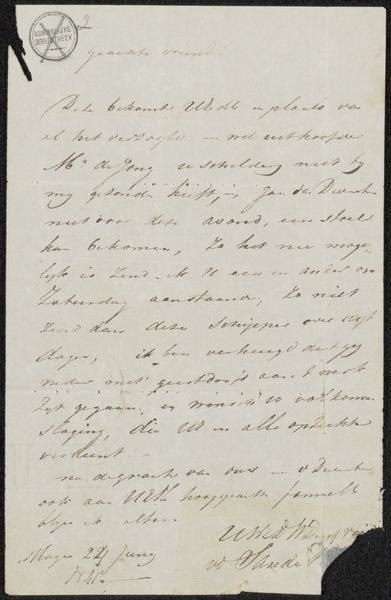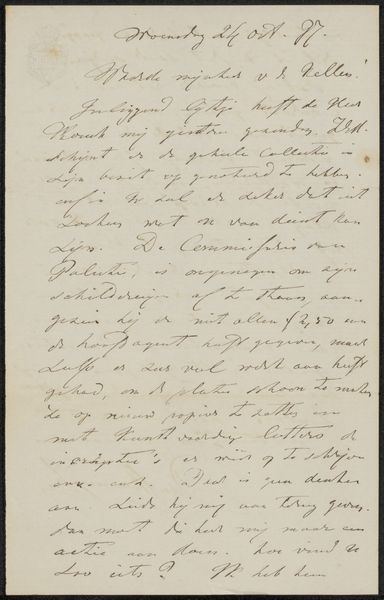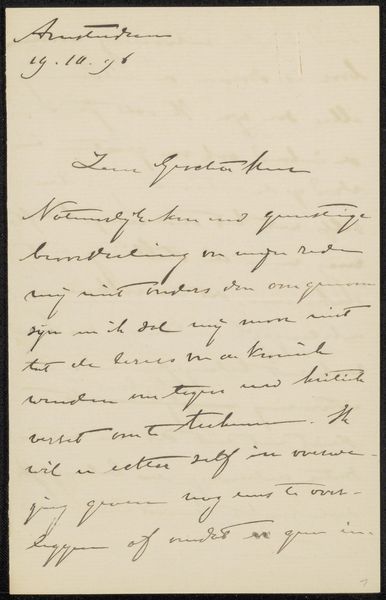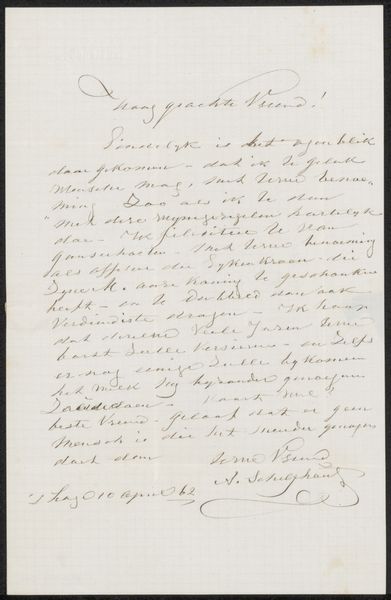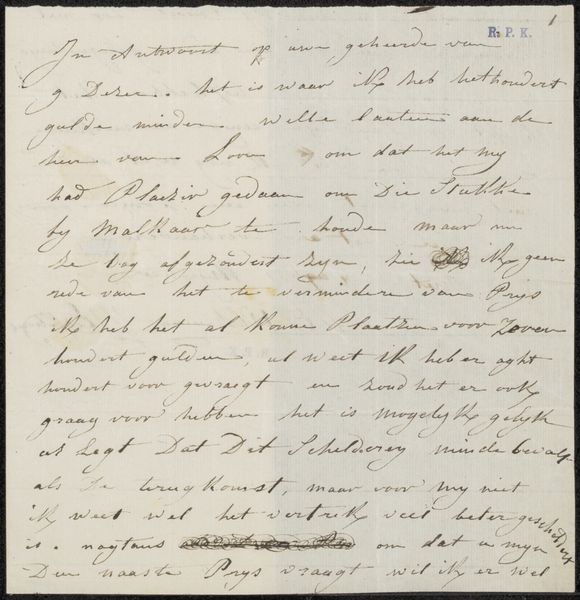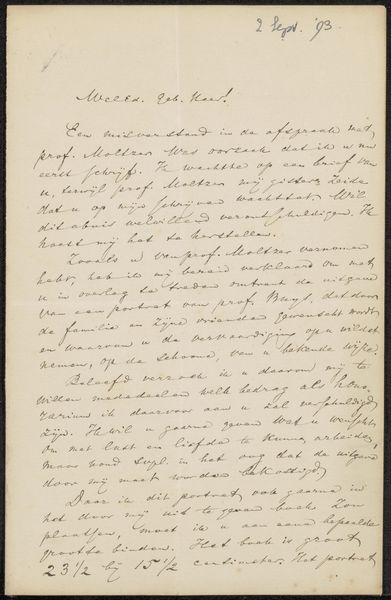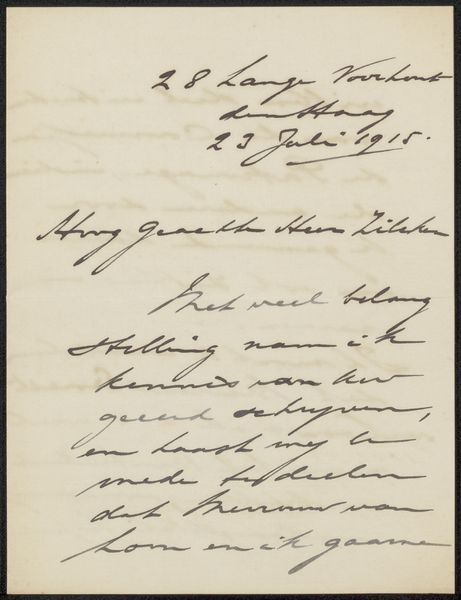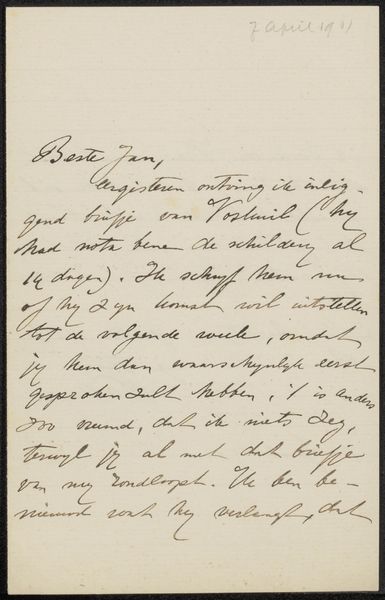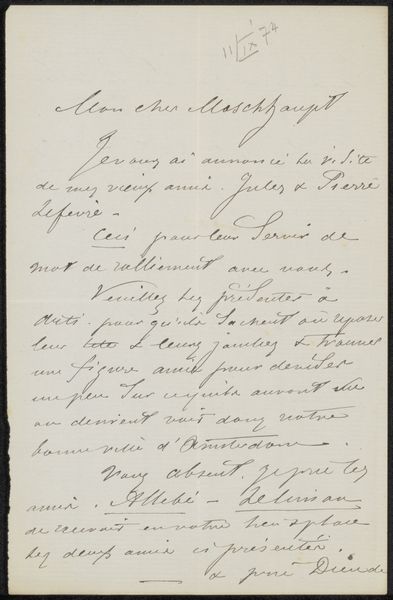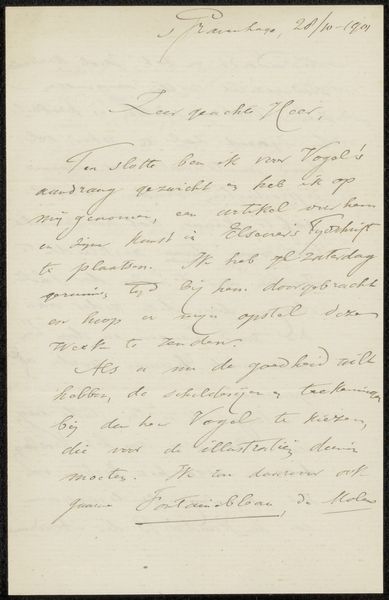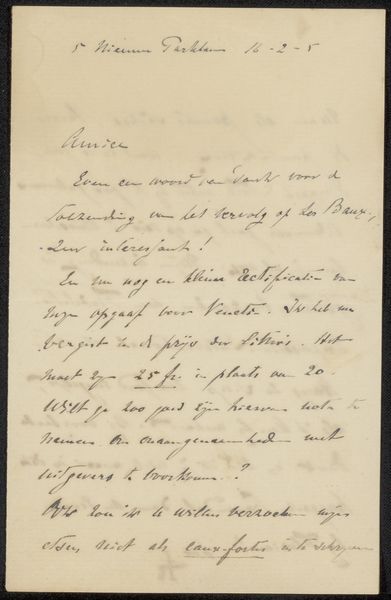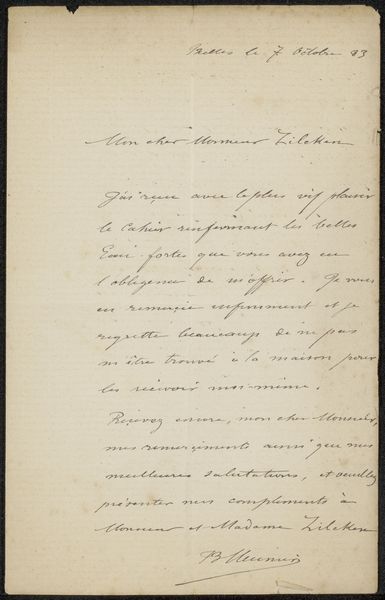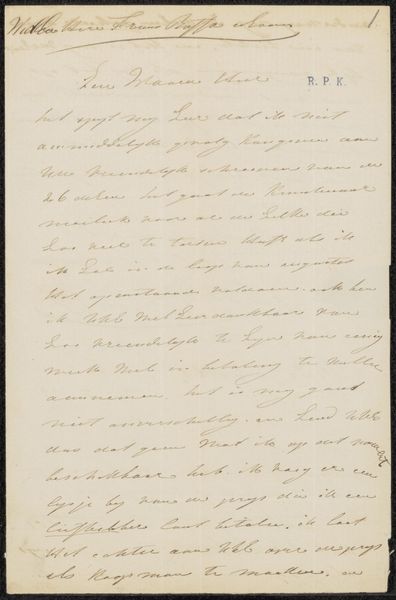
drawing, paper, ink, pen
#
drawing
#
paper
#
ink
#
pen work
#
sketchbook drawing
#
pen
Copyright: Rijks Museum: Open Domain
Curator: What strikes me first is the immediacy of it, like catching someone in a moment of private correspondence. It's intimate. Editor: We’re looking at "Brief aan Philip Zilcken", possibly created around 1894. William Macbeth penned this using ink on paper; it's technically categorized as a drawing. Beyond the visual aesthetic, let's consider the conditions of its production, you know, Macbeth's social positioning, his intended audience, Zilcken. Curator: Yes, exactly! It feels as though you almost shouldn't be reading it. I mean, it's literally someone else's mail. Do you get that feeling or is it just me? Editor: Think about Macbeth and the market, too. His gallery dealt with "pictures in oil and water colors." Was this drawing just a functional business communication, or could it be perceived as another artful output, especially in that moment? Consider paper as a commodity, and the relative cost of penning personal missives at the time. Curator: I’m caught up by how easily the personal and the professional blend. He mentions "the little matter about your picture" but frames the settlement taking "as much time as the making of a big treaty between nations." I love how the grand and the everyday intertwine. It's so familiar, so human. I would even describe it as witty! Editor: Precisely. I'm considering this artwork within a network, tracing how information, images, and capital flowed, as well as materials such as the paper and ink that made it possible. So many hands and tools and marketplaces were responsible for producing this humble object that you call intimate. Curator: It reminds me that art isn’t created in a vacuum. There's this ripple effect outwards. You have the artwork itself, of course, and the circumstances of the materials; but ultimately you're also sharing it with audiences generations on. In that context, it's fascinating, isn’t it? Editor: Exactly. Every art piece becomes a kind of artifact, reflecting a precise dance between maker, matter, and moment.
Comments
No comments
Be the first to comment and join the conversation on the ultimate creative platform.
